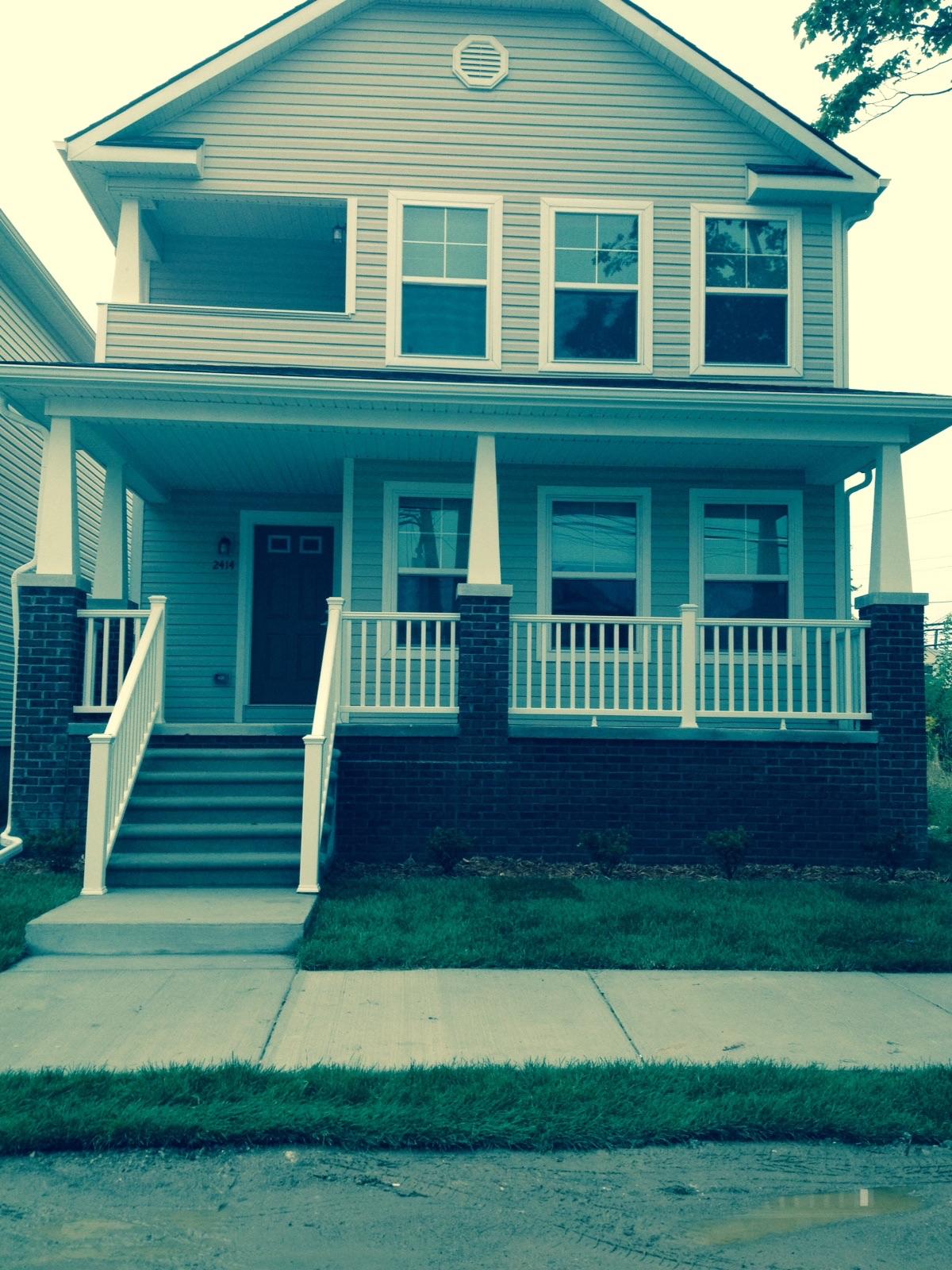 History can be an ugly thing sometimes. But sometimes the wrongs of history can be corrected. It may take awhile, but justice is always welcome once it shows up. On Wednesday, September 9, Arlene Jeter will be moving out of Southfield and into her new Hamtramck home.
History can be an ugly thing sometimes. But sometimes the wrongs of history can be corrected. It may take awhile, but justice is always welcome once it shows up. On Wednesday, September 9, Arlene Jeter will be moving out of Southfield and into her new Hamtramck home.
Granted, that by itself is not exactly worthy of a news story. Until you know the history. Because that’s when it becomes clear that this is hardly your average moving day for Jeter. Or for the City of Hamtramck.
More than one half century ago during the 1950s and 1960s, the City of Hamtramck was making plans for the construction of the Chrysler Freeway, as well as the construction of new housing in the area. Although the city used federal funds to clear out three neighborhoods’ worth of homes – homes with families in them – the city neglected to replace the housing that had been demolished. In 1968, a woman named Sarah Sims Garrett was joined by more than 100 other plaintiffs who claimed that the city of Hamtramck had violated the 14th amendment’s Equal Protection clause because 74 percent of the people displaced were African American.
Judge Damon Keith, who served as United States District judge at the time, went so far as to refer to the displacement not as urban renewal but more accurately as “negro removal.” The suit was won by the plaintiffs in 1971, and then once again upheld in Appeals Court in 1974, after which new housing was planned to be built for the plaintiffs.
More than a quarter of a century later, in 2015, the final five of the of the planned 25 homes built by Wayne County have been completed thanks to a partnership with the City of Hamtramck, Wayne Metro, Habitat for Humanity, National Faith, and the federal government.
On Wednesday, Sept. 2, Arlene Jeter and Diane Williams signed the purchase agreements on their new homes. Jeter’s grandparents, Edward and Millie Smith, were the original plaintiffs in the case. Williams, whose parents were plaintiffs, is a first generation beneficiary.
Because Jeter’s mother now lives in Arizona, the law allowed for the new home to be passed down to her. Although only a small child when her grandparents died, which meant she was never able to hear about the struggles they endured from their own lips, her mother made sure to inform her daughter of all that had transpired about how her grandparents were part of a much larger fight against discrimination that had kept them from being able to move into neighborhood homes to which they were legally entitled. Now that she is the one moving into the house, she is excited.
“It felt amazing. It was just great. Everybody has been more than wonderful,” she said.
“This whole process, we’ve been waiting a long time, and it’s just great to see the finished product. The house. The experience has been very long but it was definitely worth the wait.”
Jeter said that she first found out about the home in 2005, but that she has officially been waiting for its completion so she could move in for the past two years. Originally from Detroit’s east side, Jeter said she attended school in Hamtramck and thus is already familiar with the area. The formal moving-in ceremony will occur on Sept. 9, and Judge Damon Keith is expected to be in attendance to witness the hard-earned fruits of his labors. Keith was unable to comment for this article because he said the litigation is not completely wrapped up.
In 2001, partnering with Hamtramck, Wayne County’s Brownfield development Authority provided a $500,000 grant and a low-interest loan. The city began demolition and site preparation on the new homes. In 2002, the county’s Community Development and Housing division provided technical assistance and was one of the guarantors on the HUD Section 8 and BEDI grant worth $1.5 million. That money was used for infrastructure improvements. Using funds from Wayne County’s allocation from the U.S. Department of Housing and Urban Development, the county invested $4.1 million to build 25 new homes to help Hamtramck complete the 200 homes that were part of the lawsuit.
Because the housing had been held back from completion for decades, many of the original plaintiffs were unable to be found. According to Census records, the African American population of Hamtramck was cut nearly in half by removal of the original neighborhoods. Now that the new housing has finally been completed, first or second generation relatives of the original plaintiffs, as well as the community as a whole, will benefit from the new housing. But most importantly, all will benefit from the delivery of long overdue justice.
“We are thrilled to be a small part of this lawsuit finally coming to a close. We’re thrilled to see the families able to achieve home ownership after being displaced so long ago,” said Tara Franey, interim executive director of Habitat for Humanity’s Detroit branch office. Franey said that Habitat has been instrumental in the building and construction of five homes.
Franey was on hand to witness both Jeter and Williams receive the purchase agreements for their new homes, and she was noticeably moved by the experience.
“It’s just a wonderful opportunity to see that justice is being served and that they are so excited to move into these homes. Just thinking how long this has taken to come to fruition.”